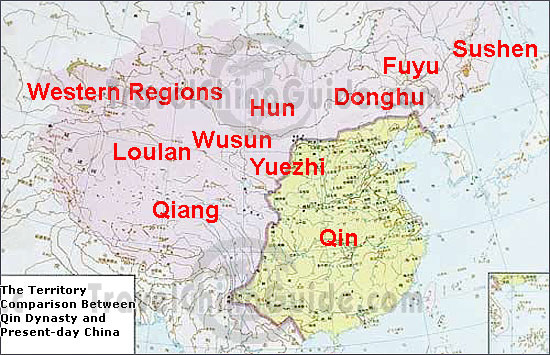Construction of Emperor Qin’s Tomb Begins
by: Kong Rui bo
China Times
East of Xianyang - It is now the year 221B.C. and Emperor Qin Shi Huang has just began the construction of his tomb. The workers constructing the wall started in the morning yesterday and are preparing themselves for a tough project. Emperor Qin believes that he is the greatest ruler ever known in history. He has stated to believe in immortality and has become more interested in it day after day.
Rumors have been going around that by now, Emperor Qin has become so interested in immortality that he has been planning to make a potion that will make himself immortal. No one knows if these rumors are true. There has also been some news about what Emperor Qin is planning to put inside of his tomb and how big the tomb is estimated to be. Emperor Qin said that when finished, the tomb is estimated to be around 2,180,000 square miles big. That is huge! There have also been some rumors going around that the tomb is going to be located at the eye of the dragon shaped piece of land, from Lishan to Mount Hua. Emperor Qin has also said that he is planning to have many models of palaces, pavilions and offices. He is also planning to have many of fine vessels, precious stones, and rarities. In one room of the tomb he is thinking about having replicas of the area’s rivers with streams made of mercury flowing to the sea through hills and mountains of bronze. A major part of the tomb that Emperor Qin is planning to include is a whole army of clay warriors. He said that if he decides to make this army of clay warriors that they will be named the Terracotta Warriors. From all of this information, it sounds like the tomb is going to be a very beautiful and spectacular thing. But on the downside, it is estimated to take around 10 or 11 years to build.
Throughout China there are many people who are really excited about the idea of the tomb. When Jia Tu Ming heard about the construction beginning, he was glad. “I can’t wait to see the tomb finished. It is going to look amazing! I think that this is a really great idea and that this is going to be a really great place for us to remember Emperor Qin when he dies.” Jia Tu Ming comes from a wealthy family. He has been a good friend with the Qin family for most of his life and is currently a minister of the Qin government.
Besides all of the people happy for the tomb, there are still many people throughout China who are not at supporting the idea of the tomb construction. We interviewed a woman named Su Liang Shen. Su Liang Shen is one of the many hundreds of thousands of workers. She is a really poor peasant. He family is currently having some trouble. She is working to build the tomb of Emperor Qin to pay off her debt. This is what she had to say about the construction of the tomb. “I hate it! It is a very tough job, working on the tomb. Everyone gets treated in a cruel way. There are hardly any breaks either! The construction just started yesterday and 3 people have already been killed! Even though I probably have the most dangerous job in China right now, I don’t have a choice. It’s the only job I can get to pay off my debt. I looks like I’ll just have to try my best.”
There are many different opinions throughout China about the construction of Emperor Qin’s tomb, but there is much more to come. This is only the beginning of a huge project.
| Map of Emperor Qin's tomb. |
| Part of the inside of Emperor Qin's tomb. |
